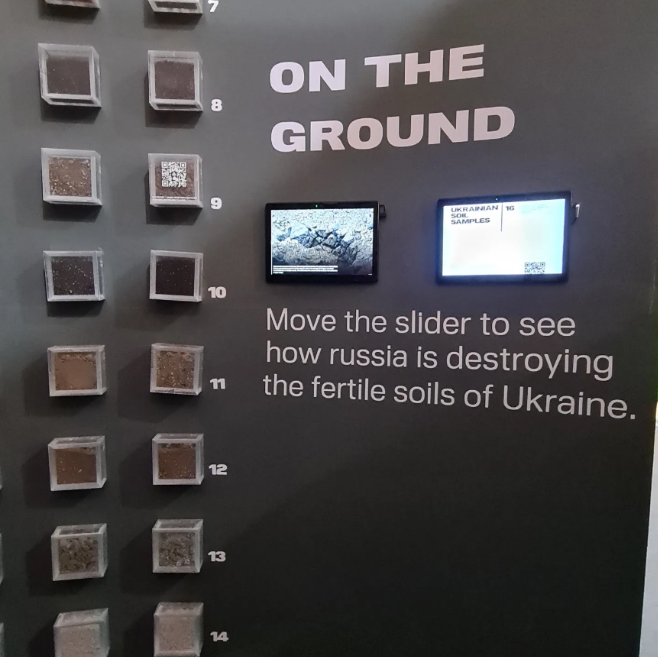OPINION: COP27 and Agriculture
Dr Budiman Minasny, of Sydney Institute of Agriculture, University of Sydney, and a scientific member of the 4per1000 Scientific and Technical Committee, shares his thoughts following the proceedings and decisions from the recent UNFCCC COP27.
A big outcome from the 27th Conference of the United Nations Framework Convention on Climate Change (UNFCCC COP27) is the establishment of the “Loss and Damage” Fund to support countries impacted by climate change. However, Member States fell short on cutting carbon emissions.
Sharm el-Sheikh, Egypt is a Las Vegas-type resort town, not seemingly the most sustainable place for such a conference. Nevertheless, the venue was packed with delegates, activists and youth concerned about climate change. But, unfortunately, there was also lots of greenwashing from the private sector present.
Food and agriculture are becoming a major part of the carbon mitigation discussion. An Adaptation and Agriculture Day was held at the Rio Pavilion, and for the first time, pavilions dedicated to Food Systems were prominently featured at the COP. The international 4 per 1000 Initiative “Soils for Food Security and Climate” held the "Healthy Soils for a Healthy Planet” initiative day highlighting efforts to boost soil organic carbon around the world.
The main concern is that agriculture and land use change contribute a quarter of global greenhouse gas emissions, and emissions from livestock contribute to a third of global methane. However, agriculture can also be a sink of carbon through nature-based solutions. Here are some examples of initiatives and practices to make this happen.
Koronivia joint work on agriculture
One of the outcomes of COP27 is the decisions in the Koronivia joint work on agriculture, in which soil carbon and sustainable soil management are highlighted. The document:
Urges parties, relevant organisations and other groups to increase their efforts in relation to promoting sustainable agriculture, including by strengthening the role of indigenous peoples and local communities, and particularly women and youth, with a view to eradicating hunger and poverty while ensuring food security.
Learn more about the decisions, what they call for, and how they are safeguarding land health here.
Regenerative Agriculture
Regenerative agriculture is being hailed as a great solution to climate change! According to the UNFCCC Climate Champions:
COP 27 is also an opportunity to reset our relationship with nature. Nature Based Solutions, including regenerative agriculture, have a central role in countries’ NDCs and national adaptation plans. Regenerative agriculture and NbS have a critical role to play in food and agricultural systems, able to sequester 10GT CO2eq per year, make land use net zero by 2030, and a 10GT CO2eq carbon sink by 2030, with benefits for biodiversity and livelihoods.
Regenerative agriculture and soil health have gained lots of attention. Sustainable Markets Initiative, a network of global food companies, released a report on Scaling Regenerative Agriculture. The Rockefeller Foundation announced 11 million USD in grants to ten organisations to scale Indigenous and regenerative agricultural practices around the world.
Even though loose concepts of permaculture, organic agriculture, conservation agriculture, indigenous agriculture to biodynamics overlap, they manage to garner attention as people are in dire need of agricultural solutions.
Rather than following the trend, it is time to set it clear. In this journal article, my team offers the following definition of regenerative agriculture:
Any system of crop and/or livestock production that, through natural complexity and with respect to its contextual capacity, increases the quality of the product and the availability of the resources agriculture depends upon; soil, water, biota, renewable energy and human endeavour.
Carbon Farming
On another front, the carbon farming initiative that started in Australia more than a decade ago has now found its way into the European Union. The European Commission is about to set standards for certifying carbon farming activities – agricultural practices that increase soil carbon. However, the method will not yet be as detailed or as robust as what has been done in Australia, as the EU is still uncertain about how to create a soil carbon market as evidenced in an article from EURACTIV:
Once a carbon removal is certified according to the criteria laid out by the Commission, it will be up to member states how farmers will be remunerated for it – through public or private carbon markets, through funding schemes, or not at all.
The Future
The World is now realising that we can’t simply practice business as usual when it comes to agriculture. Politicians, climate activists, consumers, and farmers want to ensure sustainable and carbon-neutral agriculture. Regenerative agriculture offers a promising solution. On the other hand, we should also not fall into the trap of only promoting certain practices. There is no silver bullet and no one size fits all approach.
Rather, regenerative agriculture as defined above should be combined with digital technology to connect farmers with consumers. Digital technologies can monitor soil, water, crops, and animals to ensure their health and to optimise management decisions, improve production and enrich regeneration. This information can be linked to products and enhance assurance.
This allows for much wider cross-disciplinary collaboration and could be an excellent vehicle to bring diverse groups together; soil, crops, livestock, hydrology, ecology, social science, one health, and engineering.
Finally, I’d like to share with you some powerful images from Ukraine’s pavilion at COP27.



